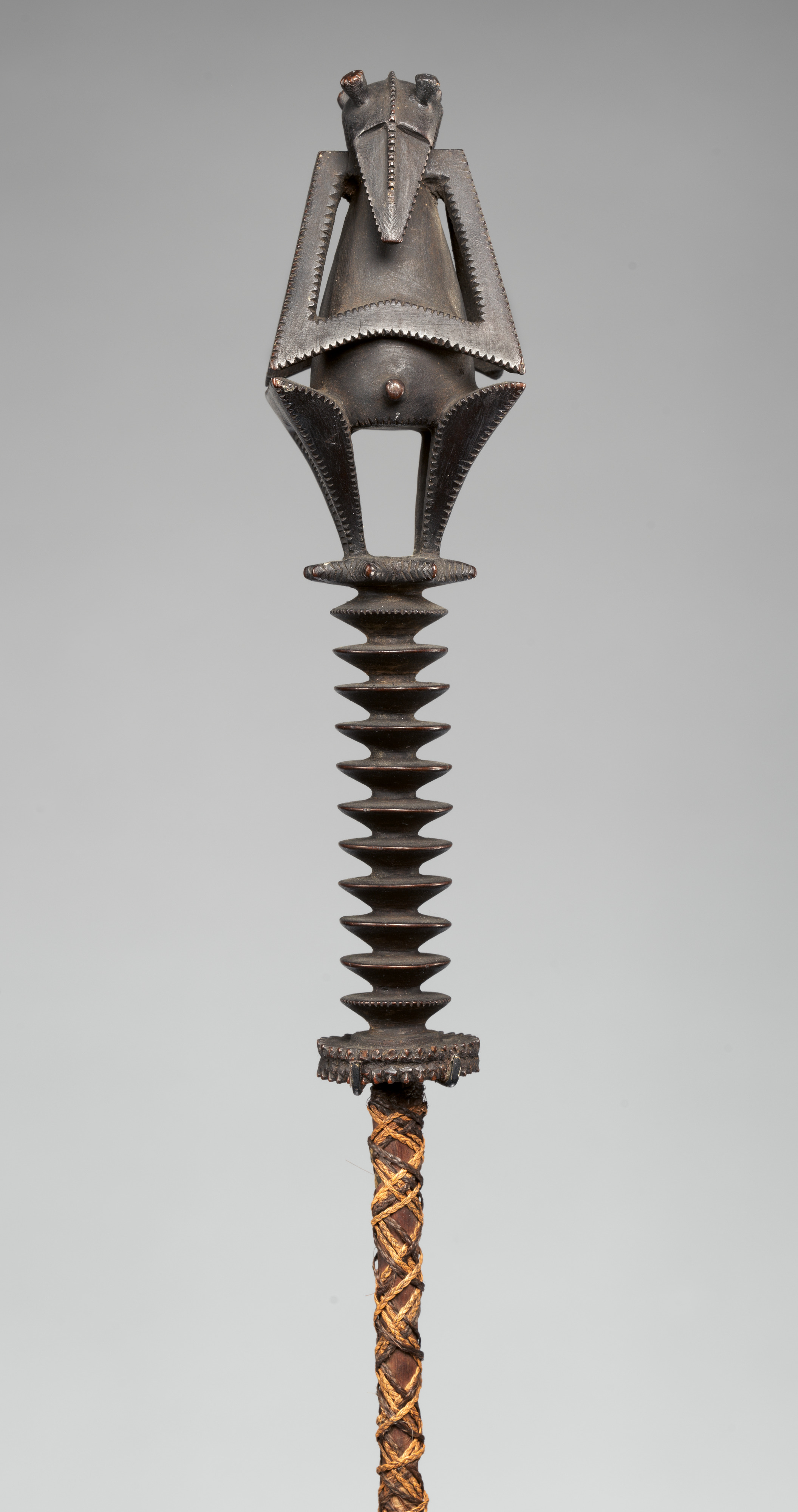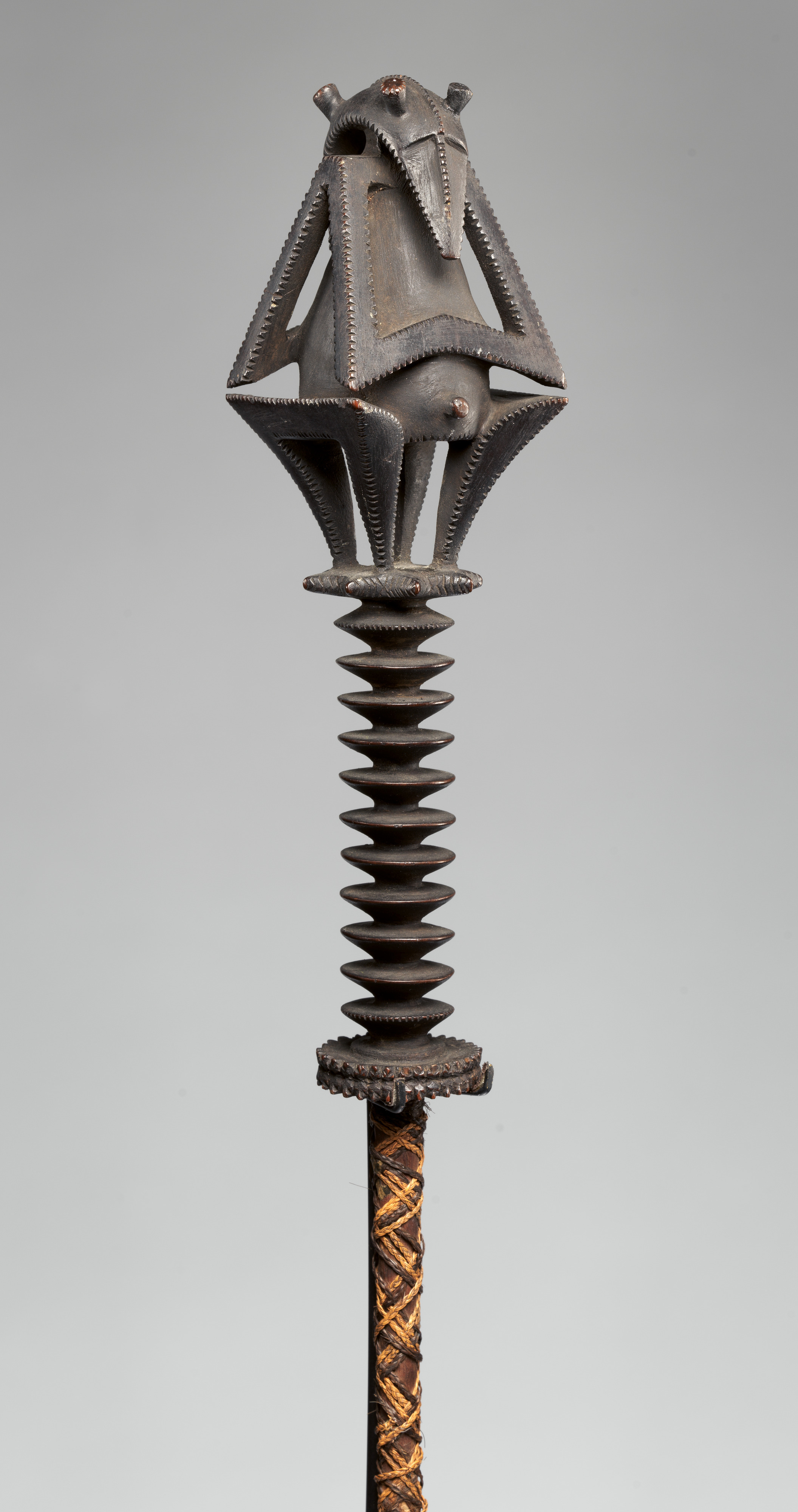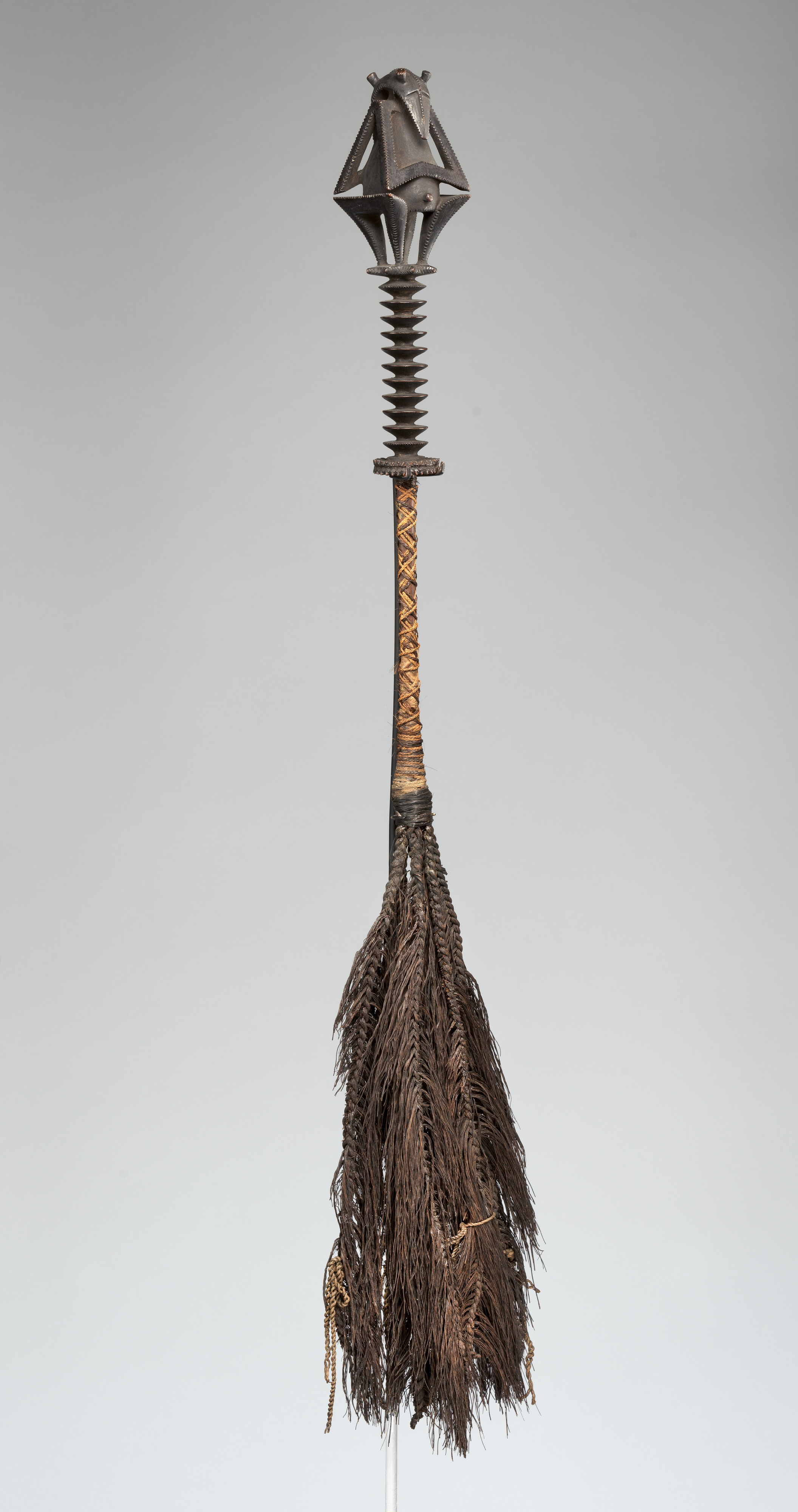Flywhisk (tahiri ra’a)
Not on view
Dynamism was a crucial aspect of Polynesian god images, and closely associated with their effectiveness as ritual objects. As part of ritual practice, priests encouraged gods to pierce through the sky into the earthly realm by fanning vigorously with ceremonial flywhisks, known as tahiri ra’a. Fanning, (or ‘whisking’) in bold, gestural movements to mark the steady rhythm of genealogical chants encouraged the arrival of the gods, who were said to bear down to the earthly realm on the wind. This specific ritual function was thus a way to attract gods out of the darkness of the spirit world to enter into the world of light, inhabited by humans, where they could be safely consulted.
James Morrison, a crew member of HMS Bounty, who accompanied that vessel’s infamous mutineers on a short-lived attempt to settle the island of Tupua’i in 1789, leaves us the earliest description of the imagery of these iconic art works which were used by Austral Island chiefs:
‘The Old Men have walking Staves & handles of Fly flaps made of the same wood, highly finished, on the Top of their Staves they generally have Carved a double figure of a man representing a figure with one Body & two Heads & some of two, standing back to back, their Fly flaps are made of the Fibers of the Cocoa Nut twisted & plaited very Curiously.’ (James Morrison, cited in Thomas and Smith, 2013)
The finely carved finial figure in this example has a pair of curving heads which bow forward, tapering to a proboscis-like tip. Two sets of rectilinear arms extend from the figure’s narrow shoulders to frame a single teardrop-shaped body. A series of delicately executed notches distinguishes precise detail in each figure, outlining the contoured edges of limbs – legs, feet, and abstracted hands which appear to be clasped, elbows nearly resting on the knees. Facial features are reduced to a single brow line, bisected by a central ridge that represents the nose and extends over the top of the head as a crest. The peg-like projections on the forehead represent ornamental topknots of hair, a coiffure worn by man of chiefly rank in the Austral Islands. The form of each topknot is echoed by the navel (pito) which projects from the center of the torso. These figures represent the earliest line of deified ancestors, supernatural beings who inhabited a primordial era alluded to in their saurian, or reptile-like, features.
Commonly referred to as ‘flywhisks’, these elegant upright sculptures have long been misunderstood, suffering from overly literal interpretations that overlook their deeper cosmological significance. Dynamism is implied in the name atua (or a-tua), the collective term for Polynesian gods, which refers to revolving or turning repeatedly around a central axis. This spinning motion is manifest in the carving of this tahiri particularly in its highly abstract finial, which seems to be doubled but actually represents a single figure in motion. The figure’s feet taper elegantly into four pairs and appear to delicately side-step around the central shaft when the tahiri is rotated on its vertical axis. The same action causes a series of circular spools and rounded discs to appear to descend downwards along the length of the wooden shaft whose lower section is bound with lengths of reddish-colored coconut fiber cord and human hair. These are highly significant materials that refer to genealogical relations between the current generation of chiefly men and their forbears. The springy coconut-fiber whisk element at the bottom further reinforces a sensation of movement and spinning. Sections of polished pearl shell tied into the bindings of tahiri would have flashed and jangled when twirled, creating the luminosity and sound that created the appropriate conditions for ritual, enhancing the efficacy of its principal objective – to summon forth the gods from the dark reaches of the ancestral realm (te po) into the light of day (te ao).
Maia Nuku, 2020 Evelyn A. J. Hall and John A. Friede Associate Curator for Oceanic Art
Published
Kjellgren, Eric. Oceania: Art of the Pacific Islands in the Metropolitan Museum of Art, pp. 299-300, no. 180. New York: The Metropolitan Museum of Art and New Haven: Yale University Press, 2007
Nuku, Maia. ATEA: Nature and Divinity in Polynesia. The Metropolitan Museum of Art Bulletin, Winter 2019, pp. 38-41
Further reading
Thomas, Nicholas and Vanessa Smith (eds.) Mutiny and Aftermath: James Morrison's Account of the Mutiny on the Bounty and the Island of Tahiti. Honolulu: University of Hawai’i Press, 2013
Due to rights restrictions, this image cannot be enlarged, viewed at full screen, or downloaded.
This artwork is meant to be viewed from right to left. Scroll left to view more.







